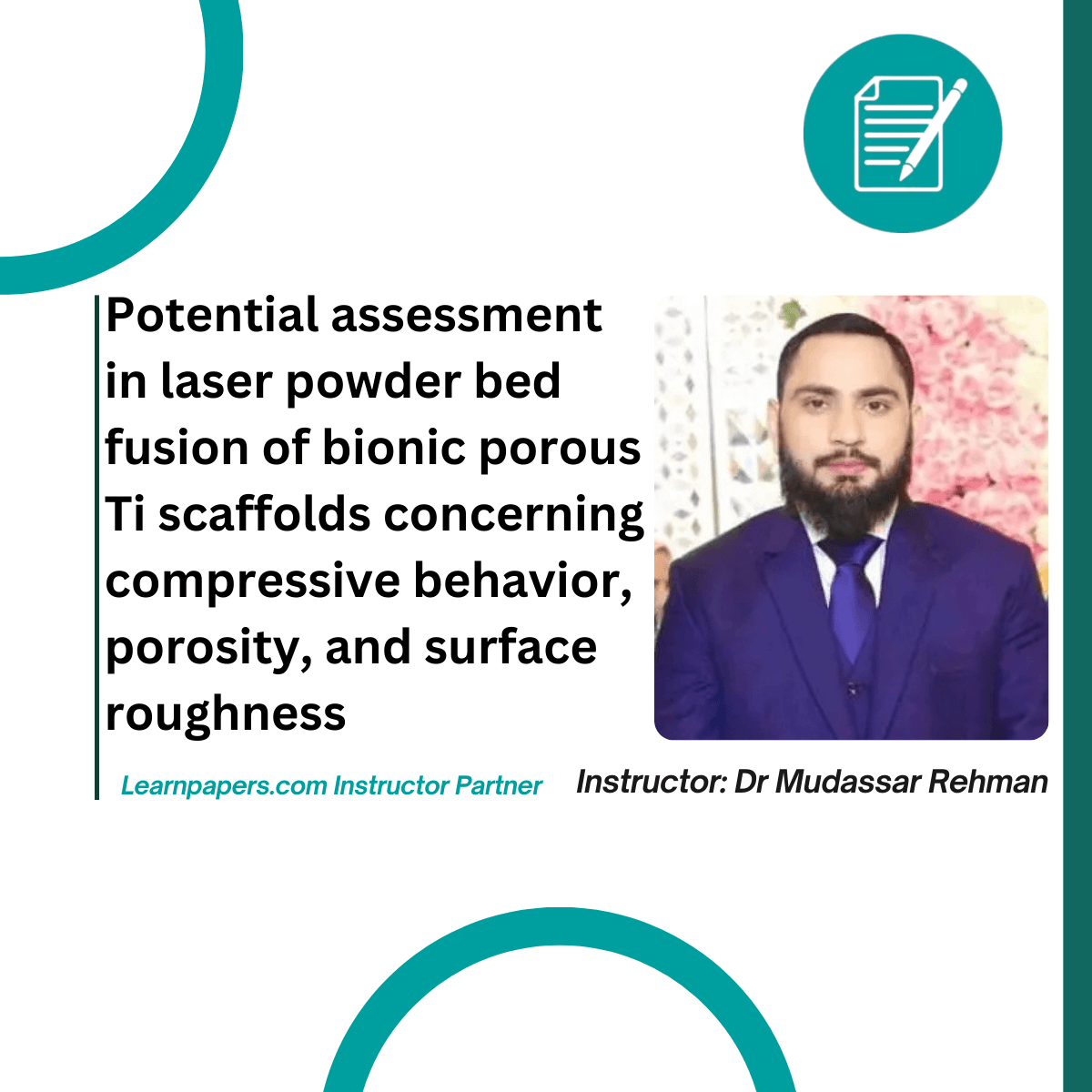Potential assessment in laser powder bed fusion of bionic porous Ti scaffolds concerning compressive behavior, porosity, and surface roughness

About Course
Porous titanium scaffolds are transforming the world of orthopedic applications, offering unmatched biocompatibility, mechanical strength, and seamless integration with human bone 🦴✨. Produced through Laser Powder Bed Fusion (LPBF) 🖨️🔥, these innovative scaffolds are engineered with precise porosity, compressive strength, and surface roughness to meet the demanding requirements of load-bearing implants. 🌟 This course takes you on a journey into the advanced techniques of LPBF, showcasing how parameter optimization enhances scaffold performance and bridges the gap between cutting-edge additive manufacturing ⚙️🔬 and groundbreaking biomedical solutions 🌍💡.
Abstract:
This work is performed to describe an optimization strategy to cope with the critical need for bio-implants with mechanical properties that closely resemble natural bone(cortical and trabecular), aiming to reduce stressshielding effects and improve implant efficacy. An investigation was conducted on fracture mechanics, surface integrity, porosity, and cytotoxicity of bio-implants fabricated using Laser Powder Bed Fusion (L-PBF) technol ogy. By varying laser energy density and applying post-processing multi-stage heat treatment (Annealing plus Aging), the bio-mechanical performance of dense and porous implants was optimized and tuned. The materials used include biomedical titanium alloys, which were selected for their superior biocompatibility and mechanical strength. This innovative approach enhanced bone healing, with 87% and 87.7% growth rates and a significant increase in compressive strength by approximately 84.62% post-treatment. These improvements are attributed to densification and elimination of microstructural defects, leading to increased biocompatibility and accelerated osseointegration, essential for the success of orthopedic implants.
DOI:
Course Content
Module 1: Introduction to Biomedical Implants
Module 2: Fundamentals of Laser Powder Bed Fusion (LPBF)
Module 3: Materials Used in LPBF for Implants
Module 4: Designing Porous Scaffolds
Module 5: Optimization of LPBF Process Parameters
Module 6: Characterization and Testing of Implants
Module 7: Microstructural and Elemental Analysis
Module 8: Applications and Future Trends
Student Ratings & Reviews

